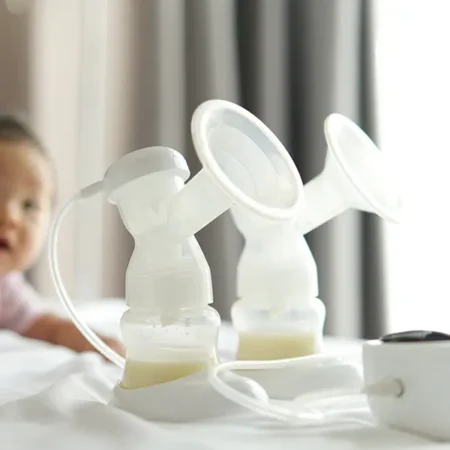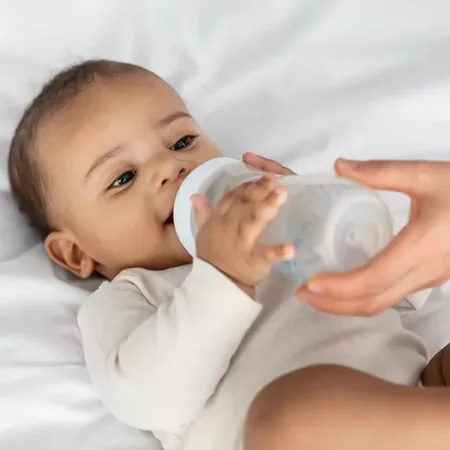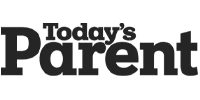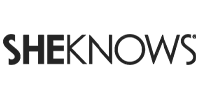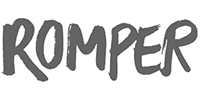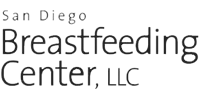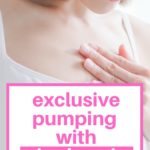Are you experiencing sore nipples from pumping? Here is what can cause nipple pain, and how to make pumping less painful.
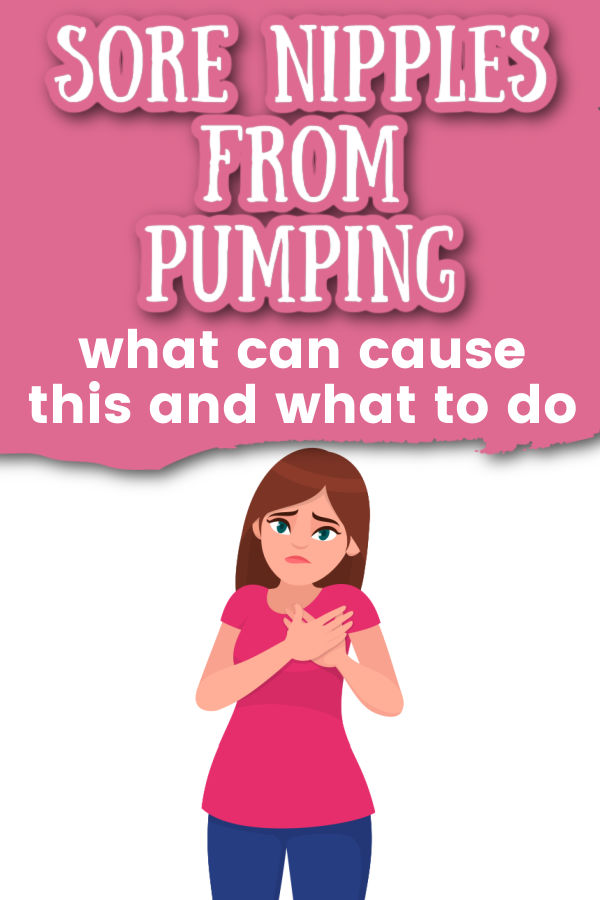
This post may contain affiliate links, which means that if you click a link and take action, I may receive a small commission at no additional cost to you. I only recommend products I love! More information here.
Causes of sore nipples from pumping
Below are some common causes of nipple pain while pumping breastmilk.
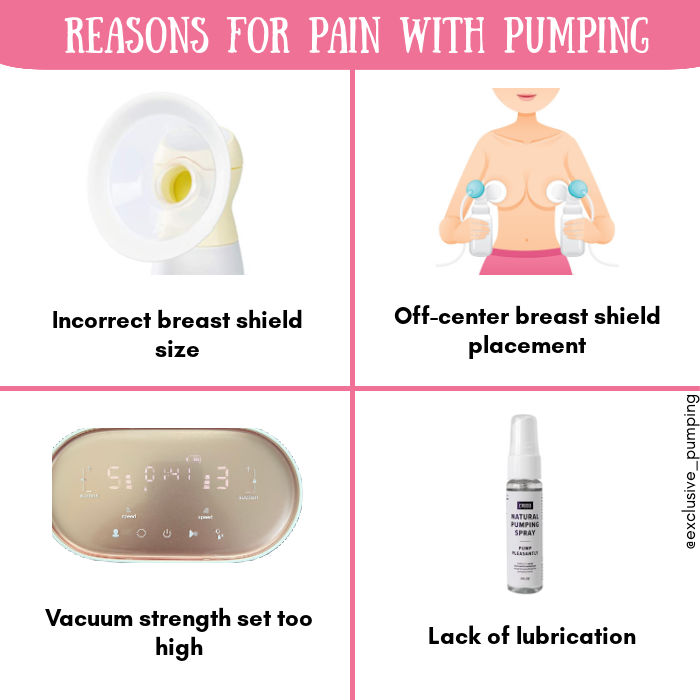
1. Incorrect breast shield size
Many breast pumps are sold with standard 24oz flanges, but you might need bigger or smaller ones to be comfortable.
Here are a couple of guidelines to help you figure out whether your flanges may not be sized correctly:
- If your nipple cannot move freely in the flange “tunnel,” the breast shield is too small. This can cause nipple pain because the fit is too tight.
- If the tissue around your nipple is being pulled into the tunnel, the breast shield is too large. Here, the cause of the nipple pain is that extra tissue that shouldn’t be pulled in is being pulled in. This agitation can bruise that tissue and cause pain and inflammation.
- If your nipple stretches for into the flange, almost to the end, you may have elastic nipples. When you have elastic nipples, you may struggle to find a flange size that is comfortable and is effective at removing milk.
One important thing that was not obvious to me is that you can have large breasts and still need a small size breast shield, because breast shield size is reflective of your nipple, and not your breast.
Legendairy Milk sells a ruler for flange sizing that you can use to measure your breast shield size – use 15EPUMP for 15% off.
More on how to make sure that you get the right breast shield size here.
Alternatives to Standard Breast Shields
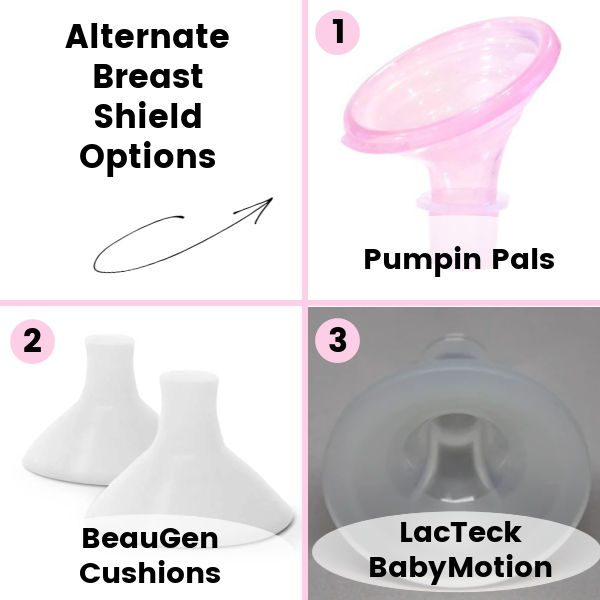
If you’ve tried a few different breast shield sizes and are still having discomfort, you might do better with breast shields that are a different shape and/or material.
- Pumpin Pals are a differently shaped flange – instead of a ring at the base of the funnel, the Pumpin Pal flange tapers into the tunnel.
- BeauGen inserts go inside your breast shield and make pumping more comfortable for some women. They reduce the size of breast shields by about 2mm, so they can also be useful if you are between sizes.
- LacTeck breast shields are made to mimic a baby’s latch more closely. They are softer and more flexible than traditional plastic breast shields.
You can use the code EPUMP10 for 10% off LacTeck BabyMotion flanges.
More information on alternative breast shields here.
2. Breast shield placement
Nipple damage – like a cracked nipple – is often caused by pumping with breast shields that aren’t centered correctly on the nipple.
If you’re able to see the positioning of your breast shields (with some pumps you can’t), check each time you start pumping to make sure your nipples are centered.
3. Pump vacuum strength
Another potential issue may be setting the suction strength too strong.
If you think this might be your issue, start your pump on the lowest setting and gradually increase it, until you start to feel a bit of discomfort. Then dial it back a notch until you’re comfortable.
(My first pump had numbered speeds from 1 to 9. When I started pumping with it for the first time when my baby was two days old, I wasn’t sure what number to set it at. I figured a higher number would mean more milk, so I put it on 9 to start out with. That was a bad idea.)
4. Lack of lubrication
Some people find pumping is more comfortable with some kind of lubrication. Coconut oil is a popular choice.
To use it, just dip your finger in the oil and apply it to the flanges and the tunnel.
Other options are pumping sprays (like CoBoo spray) – they can be less messy and easier to use.
Breast health issues
There are a few other breast issues that can cause nipple and breast pain – clogged ducts, mastitis, thrush, milk blisters, vasospasms, and galactoceles.
How do you know if you have one of these? Here are the major symptoms:
Clogged Ducts
These will usually only affect one breast at a time, and you might be able to feel a hard, painful lump (this is where the milk flow is obstructed, or “clogged”).
The area around the lump will be tender and sometimes red and warm if you touch it. The pain is at its worst before pumping/feeding, with some relief afterwards.
Clogged ducts can usually be treated at home – more on how to do that here. If you get recurrent clogged ducts, you may want to consider taking lecithin.
(Legendairy Milk reached out and gave me a discount code for their sunflower lecithin. Take 15% off with the code 15EPUMP!)
Mastitis
Mastitis has the same symptoms as a clogged duct plus a whole slew more – fever, chills, general malaise, and flu-like aching.
If your boob hurts and you also feel like you have the flu, you probably have mastitis.
More on mastitis and when to see a doctor here.
Thrush
The main symptoms of thrush are itchy, burning and/or cracked nipples, shooting pains in the breast during feedings, “intense nipple pain,” and skin changes such as shiny or flaky nipples. You may also see white patches in your baby’s mouth.
If you think you have thrush, it’s a good idea to call your OB or primary care doctor for a diagnosis and medication.
Milk Blisters
These are also called blebs or nipple blisters, and they are similar to a clogged duct but occur on the tip of your nipple. Milk blisters occur when nipple skin closes over a milk duct opening.
Nipple Vasospasms
Vasospasms are a sudden narrowing of the blood vessels in the nipple and can be very painful.
They often occur after pumping, in response to cold, and you may notice part of your nipple turning white.
Galactoceles
A galactocele is a cyst filled with breast milk. It may or may not be painful, and is often mistaken for a clogged duct or for possible breast cancer.
See your doctor if you have a persistent lump that doesn’t go away within a few days.
Miscellaneous causes
There are a few other possible culprits:
- “Squashed” breasts from sleeping your stomach, having a bra that doesn’t fit quite right, or having a bag with a strap (like a diaper bag or purse) that frequently rubs against your breast.
- A dry or chapped nipple that leads to cracking or bleeding. Lanolin or other types of nipple cream can help with this. (You can find reviews of different nipple creams here.)
What to do about the sore nipples?
Keep in mind that once you’ve addressed the underlying cause of the nipple pain (such as getting a different size flange), it may take a week or two for the damage that was already done to heal.
While you wait for your nipples to heal or recover from mastitis or thrush, there are a few things that you can do to make yourself more comfortable.
- Take Motrin or Tylenol. If it hurts more when you start pumping, make sure that you’ve taken something recently when it’s time to sit down and pump. (They are safe for breastfeeding.)
- If only one side is affected, start by pumping only the other side. Once you’ve let down, hook the affected side up to the pump. (Nipple pain is often at its worst before letdown.)
- Make sure your bra is comfortable and fits. Most nursing bras don’t have seams or wires and are constructed for lactating breasts, so these are ideal.
- If your issue is a dry, cracked or bleeding nipple, and you’re sure you don’t have thrush, try applying breast milk and/or nipple cream to your breast before and after pumping. Also, try to let your breasts “air out” if possible. Obviously, you can’t walk around topless all day, but if you can for 10 minutes at a time here and there, it may help.
- Try using a warm compress both before and after a pumping session.
Not sure what’s causing your breast pain related to pumping? Here are six questions that can help you figure out the issue.
References- Aeroflow Breastpumps. “Breast Pump Flange Sizing.” https://aeroflowbreastpumps.com/blog/breastpump-flange-size-chart
- Newman, Jack, MD. “Sore nipples.” https://ibconline.ca/information-sheets/sore-nipples/
